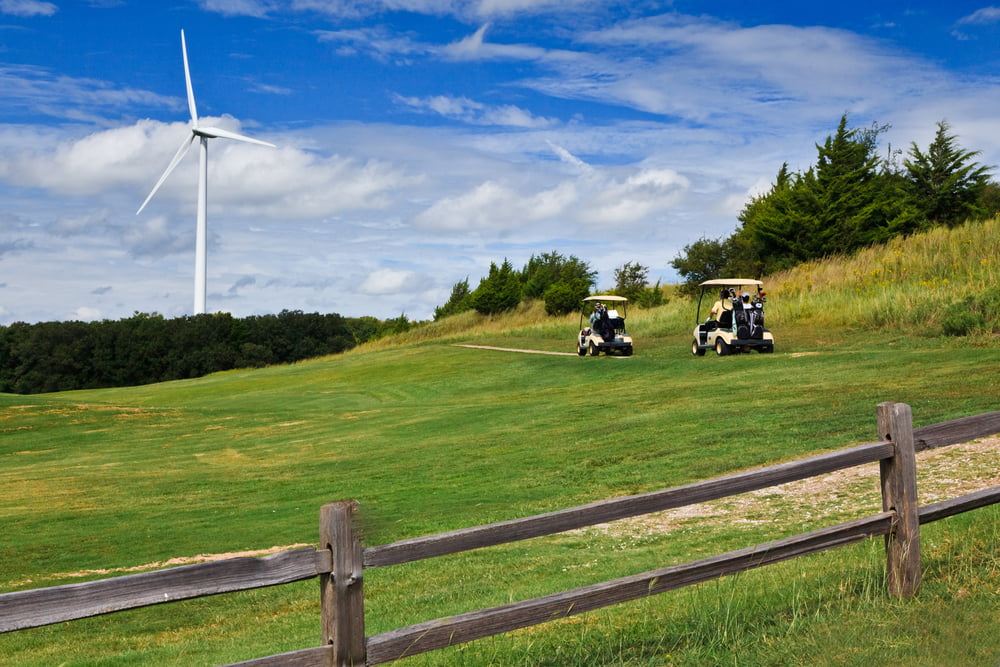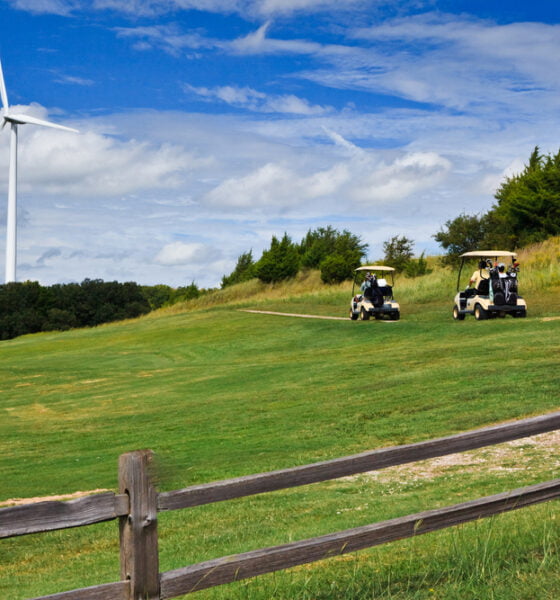

Environment
How Sustainable Is Golf and Can We Make It Greener?
As a sport, golf can often receive a bad rap for being seen as elitist and a drain on precious resources that could be used elsewhere.
On the face of things, you can see why golf is seen as an unsustainable sport as course management requires a lot of water to keep the grass green or harmful chemicals to keep pests and weeds at bay.
But is it as bad as it seems and are there any environmental benefits to golf? Let’s take a closer look at this sport that has been around since the 15th century to see whether it’s sustainable and the ways we could make it greener.
What are the environmental benefits of golf?
Before discussing whether golf is bad for the environment let’s look at the positives to the planet that golf courses bring.
Protecting nature
Golf courses typically strive to protect and conserve as many natural habitats and plant life found on their grounds. Many courses will stick to native plants that naturally thrive in their environment but perhaps most importantly those flowers, shrubs, trees, and grasses will be largely left to their own devices.
That means pollinators like mammals, insects, and birds are left undisturbed, encouraging a bustling, diverse, and self-supporting ecosystem. Furthermore, when partnered with local conservation groups golf courses can become a sanctuary for protected species that few other green spaces can provide.
Increased biodiversity
One study discovered that golf courses contained the greatest diversity and abundance of beetles, bees, birds, and bats of all the green spaces in Melbourne, Australia. Thanks to the large variety of plants and potential habitats for wildlife, not to mention the relative peace, a golf course becomes a great place to live if you are an animal, bird, or insect.
Reduced light pollution
Furthermore, golf courses are less impacted by light pollution which allows nocturnal wildlife to flourish. Experts at National Geographic explain, “Artificial light can wreak havoc on natural body rhythms in both humans and animals”. They go on to say, “Nocturnal light interrupts sleep and confuses the circadian rhythm—the internal, twenty-four-hour clock that guides day and night activities and affects physiological processes in nearly all living organisms”.
How much energy does a golf course use?
While there are plenty of positives to shout about for conservation and the benefits golf courses provide to wildlife and the people using them, there is no denying the flipside and the energy required to maintain a golf course.
Water consumption and energy costs
Golf courses require plenty of water and depending on the location and climate, a course can use as much as nine million gallons of water per day – this is the equivalent of 13 Olympic-sized swimming pools. There are an estimated 15,000 golf courses in the United States alone, which adds up to billions of gallons of water used each day for maintenance.
Keeping a course in good shape requires electrical energy for lighting, maintenance of equipment, and the running of the clubhouse. Golf courses must also heat and cool buildings, keep their irrigation systems operational, and provide water for hygiene, such as showers and toilets, together with all clubhouse beverage requirements.
Chemical preservation
It’s not just water that golf courses rely upon to keep the grass lush and the flowers blooming. Many courses use harmful chemicals like pesticides and fertilizers to control weed growth and prevent herbivores from munching on their plant life.
Is travel essential?
Golf courses are physical locations so players must travel if they wish to play on them. This, of course, can increase the environmental burden of golf courses as people jump in their cars to play a round of golf.
However, while the average golfer might have to drive a few miles to play their local course, those at the elite and professional level undoubtedly have larger carbon footprints. Whether it’s a PGA Tour superstar jetting halfway around the world to play in a prestigious tournament or a club-level pro playing in national tournaments, there is no denying the travel involved.
Golf tourism
Furthermore, golf tourism is a bustling industry with people traveling to other countries to experience what their best courses have to offer.
Whether it’s golfers in the United States hopping over to Scotland to play its famous courses or Europeans visiting golf resorts in Dubai, it’s clear that golf tourism adds to the environmental impact of the sport.
Is there an alternative?
Golf is largely played on the course or at a driving range but there is an alternative that lets you replicate the feeling of being on the course without the travel.
Golf simulators are a great way for golfers to experience the game from the comfort of their own homes without the need to visit a physical course. With the ability to play some of the most famous courses in the world, you can avoid the plane travel and waiting list, being able to drop in and out whenever you want.
Out with the old
While a golf course is guilty of using a ton of resources, there is no denying that a golfer’s never-ending quest for the latest and greatest equipment is also a contributor to the sport’s carbon footprint. Of course, new clubs, balls, bags, shoes, and clothes come with improvements but is it essential to replace these items so frequently?
Naturally, there will be wear and tear but many golfers are guilty of swapping out their equipment before it’s necessary. This is perhaps fed by the constant upgrading of clubs and equipment at a professional level where some players can change clubs as often as every six months.
How to reduce golf’s environmental impact
Here are some examples of the ways that golf courses and golfers can lower the environmental impact of the sport:
- Water conservation and optimized watering
- Irrigate with recycled water
- Eco-friendly or organic fertilizers and pesticides
- Minimized mowing
- Energy-efficient maintenance equipment
- Using solar power
- Locally-sourced food in the clubhouse
- Improving biodiversity
- Strong waste management
- Drought-resistant grass
- Avoiding golf tourism
Can the average golfer make a difference?
You might not think it’s possible to change the way your golf club manages its course but it’s certainly worth asking some questions to greenkeepers and management. Golfers can help courses to change their behavior by highlighting green alternatives and raising concerns at club meetings.
You can also reduce your impact by changing your clubs less frequently, choosing a golf course that champions sustainability, bringing your own food and drinks, and walking around 18 holes rather than using a golf buggy or trolley.


 Environment9 months ago
Environment9 months agoAre Polymer Banknotes: an Eco-Friendly Trend or a Groundswell?

 Environment11 months ago
Environment11 months agoEco-Friendly Home Improvements: Top 7 Upgrades for 2025

 Features8 months ago
Features8 months agoEco-Friendly Cryptocurrencies: Sustainable Investment Choices

 Features9 months ago
Features9 months agoEco-Friendly Crypto Traders Must Find the Right Exchange

















